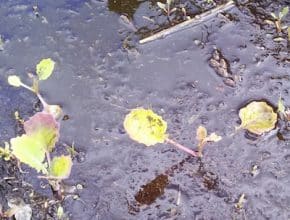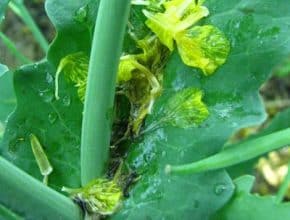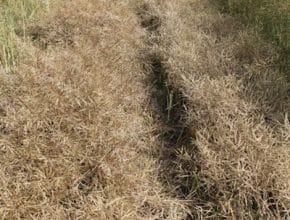With rainfall general across the Prairies — excessive in certain areas — and with flowering just around the corner, the sclerotinia stem rot risk is building. Assess the situation field by field to see which may warrant a protective fungicide. Excessive moisture can cause leaching of nitrogen and sulphur. Assess yield potential and root depth to see whether a top…
June 26, 2013 - Issue 13
-
-
1. Have a plan to manage clubroot. Don't wait until clubroot manages you. Whether you're a farmer, agronomist, county/municipal staff, extension, or from the oil & gas industry, you need a clubroot management plan. A plan should include answers to the following: How will you quarantine a field? How will you plan your field work? When will you sanitize your…
-
Wet soils cause an oxygen deficiency, which reduces root respiration and growth. Root failure reduces nutrient uptake, and plants will eventually die unless drowned areas dry out quickly. A few days in waterlogged soil can be enough to kill canola plants, and yield loss is certain — although as canola plants age, they tend to be more resilient…
-
Growers can expect to see some nitrogen loss from extended heavy rains, probably in the range of 20-50%. Before top dressing, wait to see how the crop recovers from saturated soils before investing any more in fertilizer. Don’t do anything while soils are still wet — roots cannot take up nutrient when soils are saturated. Applying nutrient direct to leaves…
-
We’ve had reports this week of growers causing unexpected damage to canola because the sprayer was not cleaned properly. The ideal tank cleaner has a detergent, a surfactant and a component to increase pH (i.e. ammonia) in one formulation. The detergent will cut any oils or fats found in current adjuvants, the pH increaser solubilizes the Group 2 herbicides and…
-
Growers with high risk conditions for sclerotinia stem rot may want to get their management plan in place. Booking fungicide may be worthwhile if you have a preferred product. This is pre-planning only. Fungicide applications must target flowers to be effective, so do not spray until a field reaches at least 20% flowering…
-





